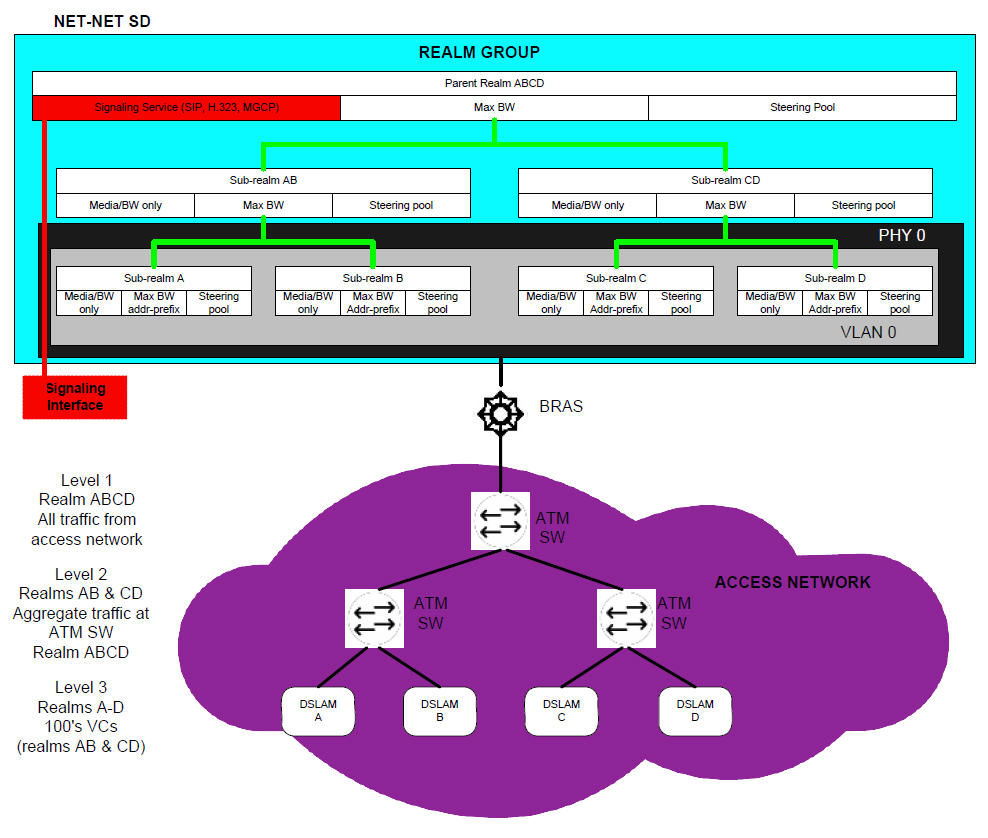Multi-Level Bandwidth Policy Nesting
Multi-level nesting of bandwidth policy enforcement addresses the following issues:
- Bandwidth over-subscription: access or transit transport networks are aggregated and/or oversubscribed. For example, digital subscriber lines (DSL), Frame Relay (FR), and Asynchronous Transfer Mode (ATM). Admission control policies must reflect access network topology.
- Bandwidth partitioning for multiple services: access or transit bandwidth is partitioned among multiple service profiles (SIP, for example) in the same customer network.
- Multi-site VPN environments: admission control must be applied at the site level as well as the VPN level.
The following example illustrates different scenarios; in each there are two or more levels of admission control required. Nested admission control is best depicted by the DSL broadband example.

In DSL access networks, ATM network bandwidth is typically oversubscribed at rates up to 400/1. At Level 3 (above), hundreds of users virtual circuits (VCs) are aggregated to a smaller set of virtual paths (VPs) at each DSLAM. At Level 2, many virtual paths are aggregated at the first ATM switch. Finally, at Level 1, all traffic from all subscribers in the access network is aggregated at the BRAS. Each level of aggregation is oversubscribed, creating the need to perform admission control at each level.
From a Oracle® Enterprise Session Border Controller perspective, multiple tiers of realms are supported, each with its unique bandwidth policy. Only the lowest order realm (Level 3) requires an address prefix (that assigned to the DSLAM) that must be used by the Oracle® Enterprise Session Border Controller to determine in which realm a user resides. When a call request to or from a particular user is received, the Oracle® Enterprise Session Border Controller checks each realm in the path to determine whether sufficient bandwidth is available to place the call.



